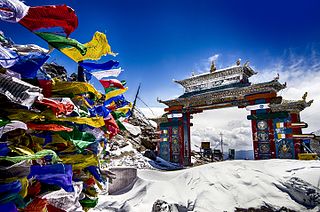
Northeast India (officially the North Eastern Region(NER)) is the easternmost region of India representing both a geographic and political administrative division of the country. It comprises eight states—Arunachal Pradesh, Assam, Manipur, Meghalaya, Mizoram, Nagaland and Tripura (commonly known as the "Seven Sisters"), and the "brother" state Sikkim.
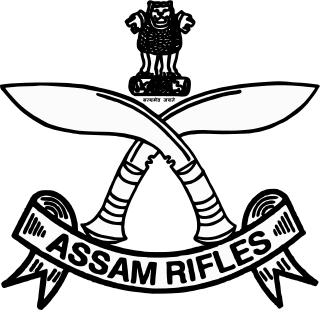
The Assam Rifles (AR) is a central paramilitary force responsible for border security, counter-insurgency, and maintaining law and order in Northeast India. Its primary duty involves guarding the Indo-Myanmar border. The AR is one of the Central Armed Police Forces (CAPF) administered by the Ministry of Home Affairs. The Indian Army maintains operational control of the AR. As a police force, its recruitment, perks, promotions, and retirement policies are governed by CAPF rules. Approximately 80 percent of the officers are deputed from the Army, while the remaining personnel are drawn from the AR cadre. The AR is commanded by the Director General of the Assam Rifles, who is appointed by the Ministry of Home Affairs.
Armed Forces Act (AFSPA), 1958 is an act of the Parliament of India that grants special powers to the Indian Armed Forces to maintain public order in "disturbed areas". According to the Disturbed Areas Act, 1976 once declared 'disturbed', the area has to maintain status quo for a minimum of 3 months. One such act passed on 11 September 1958 was applicable to the Naga Hills, then part of Assam. In the following decades it spread, one by one, to the other Seven Sister States in India's northeast. Another one passed in 1983 and applicable to Punjab and Chandigarh was withdrawn in 1997, roughly 14 years after it came to force. An act passed in 1990 was applied to Jammu and Kashmir and has been in force since.

The Insurgency in Northeast India involves multiple separatist militant groups operating in some of India's northeastern states, which are connected to the rest of India by the Siliguri Corridor, a strip of land as narrow as 14.29 miles (23.00 km) wide.

Terrorism in India, according to the Home Ministry, poses a significant threat to the people of India. Compared to other countries, India faces a wide range of terror groups. Terrorism found in India includes Islamic terrorism, separatist terrorism, and left-wing terrorism India is one of the countries most impacted by terrorism.
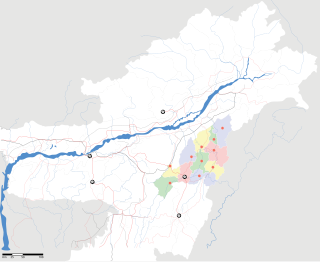
The insurgency in Nagaland, in northeastern India, is an ongoing conflict fought between the ethnic Nagas and the governments of India. Nagaland inhabited by the Nagas is located at the tri-junction border of India on the West and South, north and Myanmar on the East.
Secession in India typically refers to state secession, which is the withdrawal of one or more states from the Republic of India. Whereas, some have wanted a separate state, union territory or an autonomous administrative division within India. Many separatist movements exist with thousands of members, however, some have low local support and high voter participation in democratic elections. However, at the same time, demanding separate statehood within under the administration of Indian union from an existing state can lead to criminal charges under secession law in India. India is described as a ‘Union of States’ in Article 1 of the Indian constitution I.e indestructible nation of destructible states where a state or Union territory of India can't secede from India by any means.
Human rights abuses in Jammu and Kashmir range from mass killings, enforced disappearances, torture, rape and sexual abuse to political repression and suppression of freedom of speech. The Indian Army, Central Reserve Police Force (CRPF), and Border Security Personnel (BSF) have been accused of committing severe human rights abuses against Kashmiri civilians. According to Seema Kazi, militant groups have also been held responsible for similar crimes, but the vast majority of abuses have been perpetrated by the armed forces of the Indian government.

Human rights abuse is an ongoing insurgency in Manipur, a northeastern Indian state. The issue started in the 1960s due to a separatist conflict. The Indian army, paramilitary, and police personnel are responsible for killings and torture within Manipur. Human rights violations by Indian security forces are said to have fueled the armed opposition groups in Manipur. Insurgent groups have kidnapped children to train them as child soldiers against the Indian government. Manipur was declared a “disturbed area” by the Indian government in 1980 in the Armed Forces Special Powers Act of 1958.

Human rights abuses in Assam have been compared to the situation of human rights abuses in other insurgency-affected areas of northeast India.
Thangjam Manorama (1971–2004) was a 32-year-old woman from Manipur, India who was killed by the Indian paramilitary unit, 17th Assam Rifles on 11 July 2004. Her bullet-ridden and badly mutilated dead body was found abandoned three kilometers away from her home where she was arrested the night before. She was shot several times. Investigations revealed that she was tortured and raped before being killed but there was involvement of Assam Rifles.
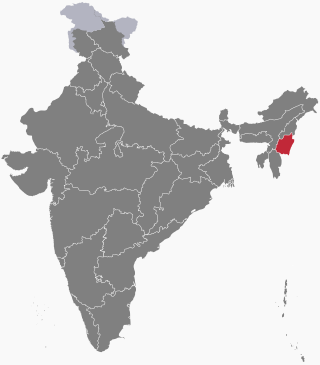
The Insurgency in Manipur is an ongoing armed conflict between India and a number of separatist rebel groups, taking place in the state of Manipur. The Insurgency in Manipur is part of the wider Insurgency in Northeast India; it combines elements of a national liberation war as well as an ethnic conflict.
Operation Golden Bird was an Indian-Myanmar military operation conducted by the Indian Army in April–May 1995.
The Naga Peace Accord is a peace treaty, signed, on 3 August 2015, between the Government of India, and the National Socialist Council of Nagaland (NSCN), to end the insurgency in the state of Nagaland in Northeast India. The Government’s interlocutor for Naga Peace Talks, R. N. Ravi signed it on behalf of the Government of India, whereas Lt. Isak Chishi Swu, Chairman and Thuingaleng Muivah, General Secretary signed on behalf of the NSCN, in presence of the Indian Prime Minister, Narendra Modi.
This is a timeline of the Insurgency in Northeast India, an ongoing armed conflict between the separatist rebels and the Indian government.
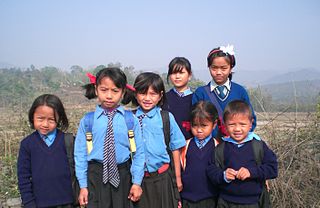
The hill tribes of Northeast India are hill people, mostly classified as Scheduled Tribes (STs), who live in the Northeast India region. This region has the largest proportion of scheduled tribes in the country.

Border disputes of Northeast India mainly include inter-state conflict between Assam–Mizoram, Assam–Arunachal Pradesh, Assam–Nagaland and Assam–Meghalaya. The disputes, including clashes between rival police forces, have resulted in the loss of life, livelihood and property. The border disputes in some cases are part of the larger national (separatist), sub-regional and ethnic conflicts, as well as criminal enterprise fuelled. This internal land conflict in the districts of the northeast are part of the 322 districts affected by ongoing land conflicts out of a total of 703 districts in India.

On 4 December 2021, a unit of 21st Para Special Forces of the Indian Army killed six civilians near the village of Oting in the Mon District of Nagaland, India. Eight more civilians and a soldier were killed in subsequent violence. The killings were widely condemned with many calling to repeal and revoke the Armed Forces Special Powers Act.

The 1994 Mokokchung Massacre also referred to as Ayatai Mokokchung by the citizens of the town, took place on 27 December 1994, when forces of the 10th Assam Rifles and the 12th Maratha Light Infantry of the Indian Army raided upon civilian populace of Nagaland's Mokokchung.
Kohima North Police Station, is a police station located at Keziekie Ward near the Kohima Village entry gate in Kohima, Nagaland, India. Established in 1933, it is the oldest police station in Nagaland.












